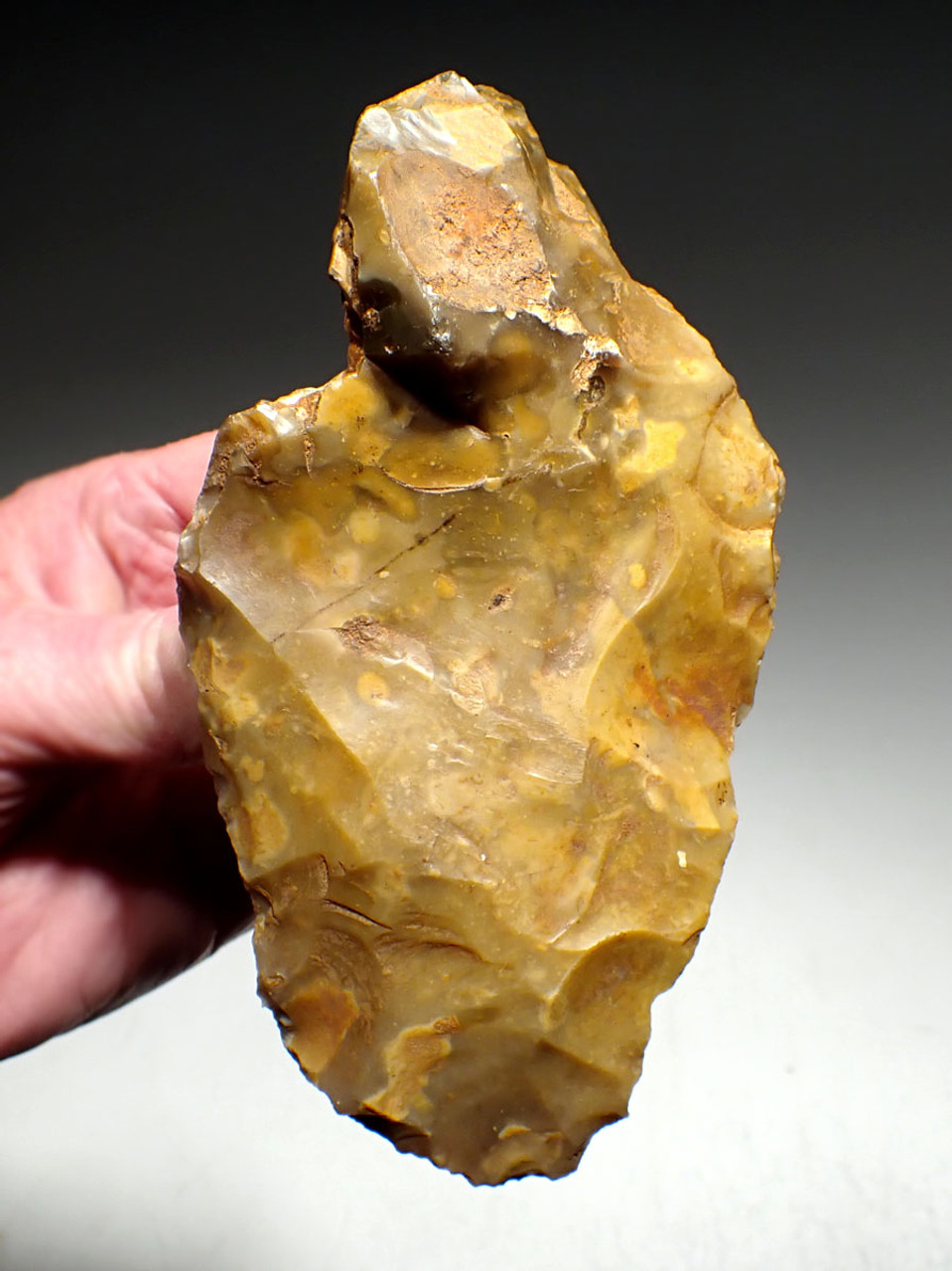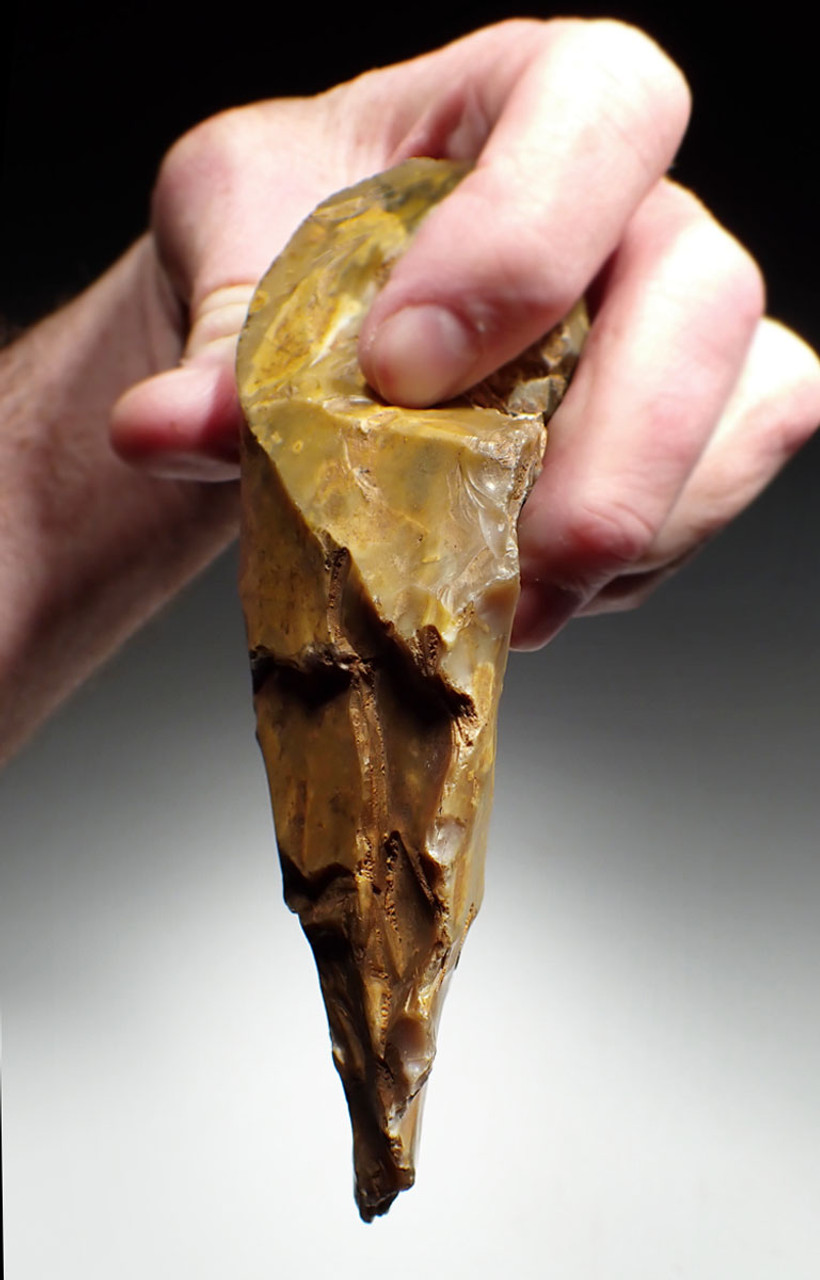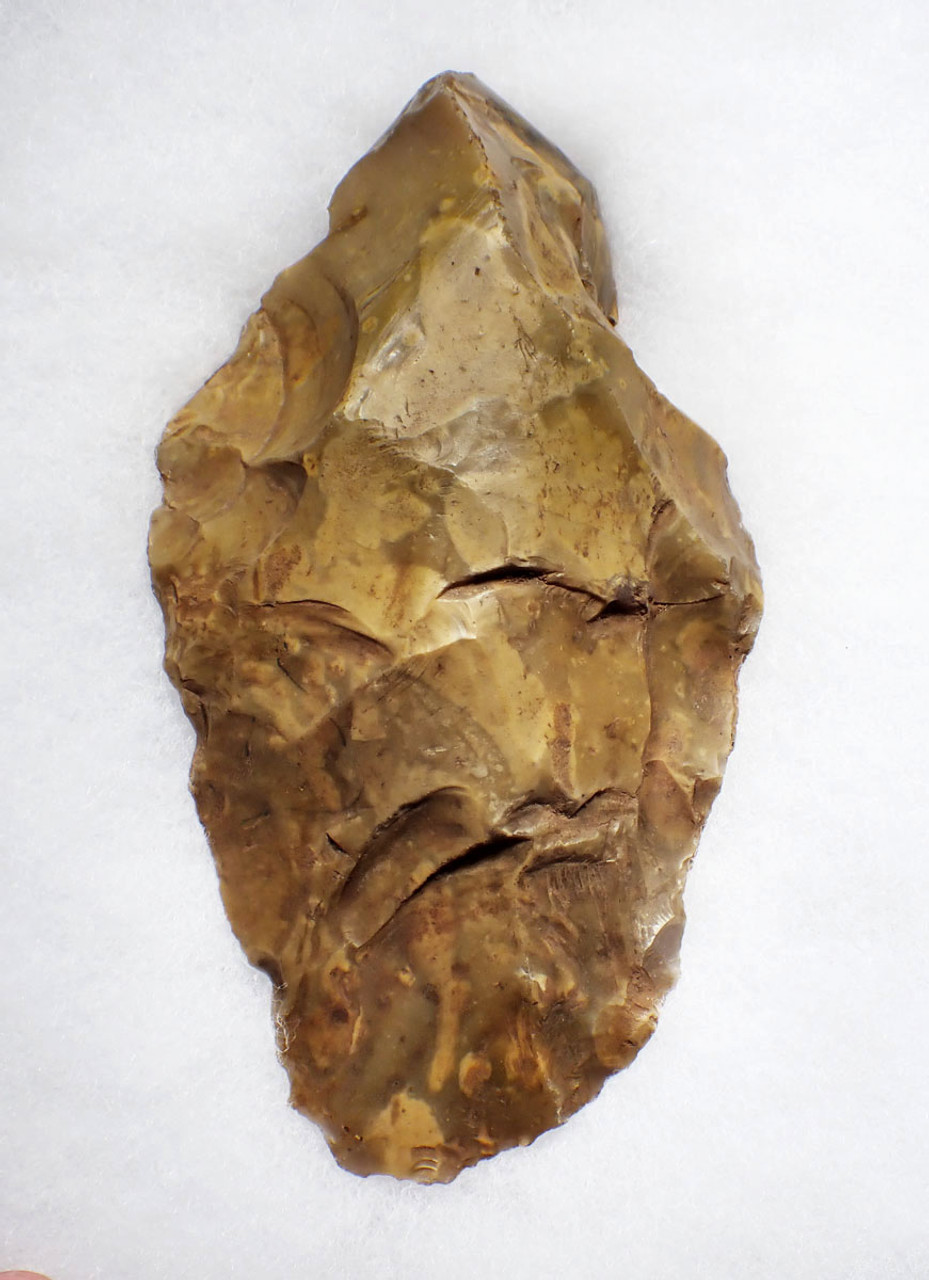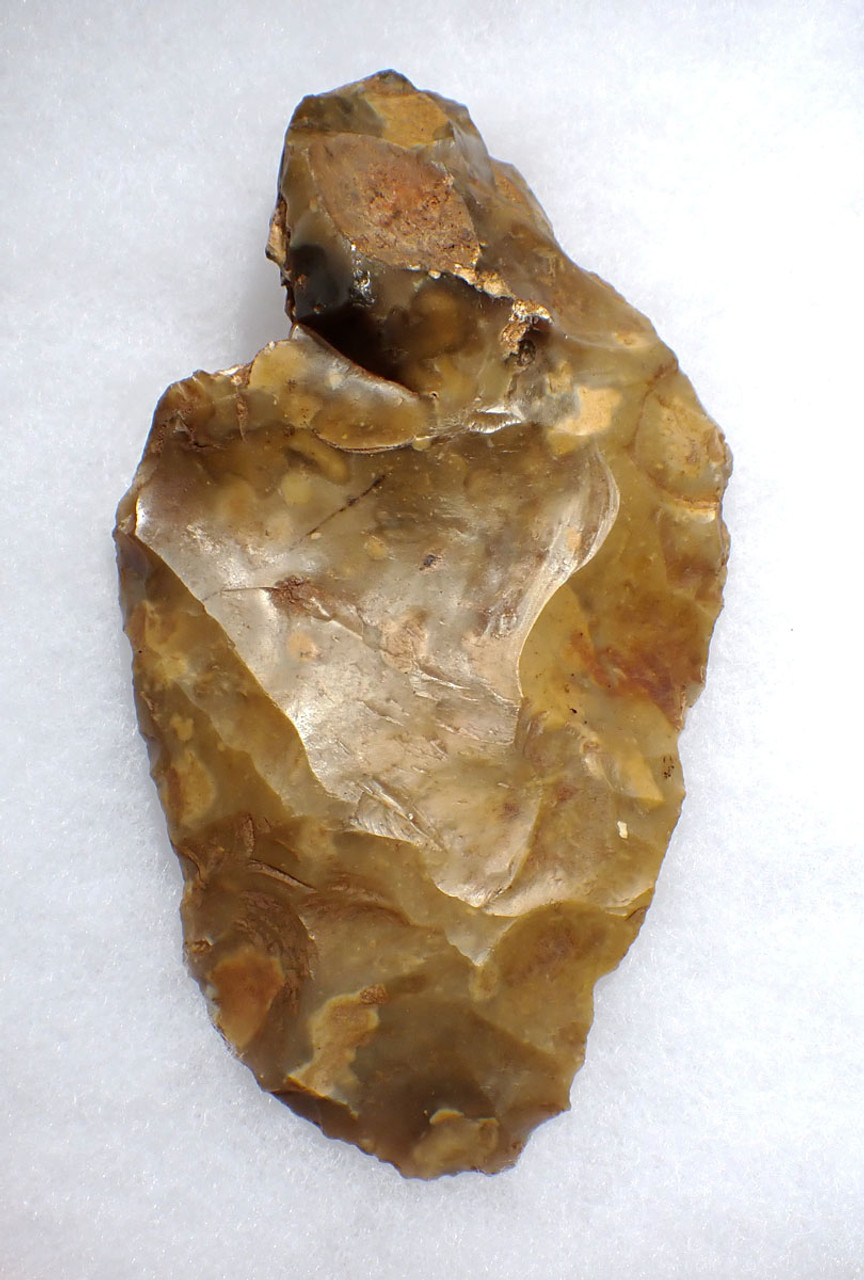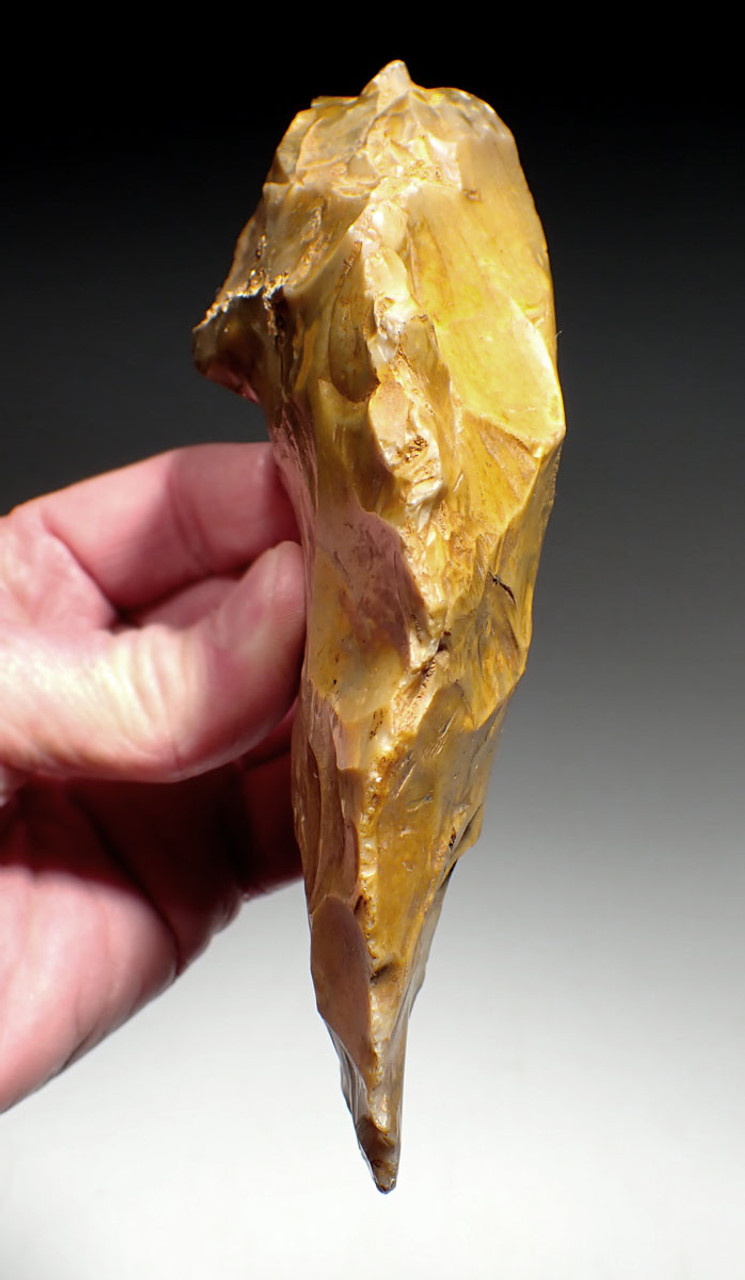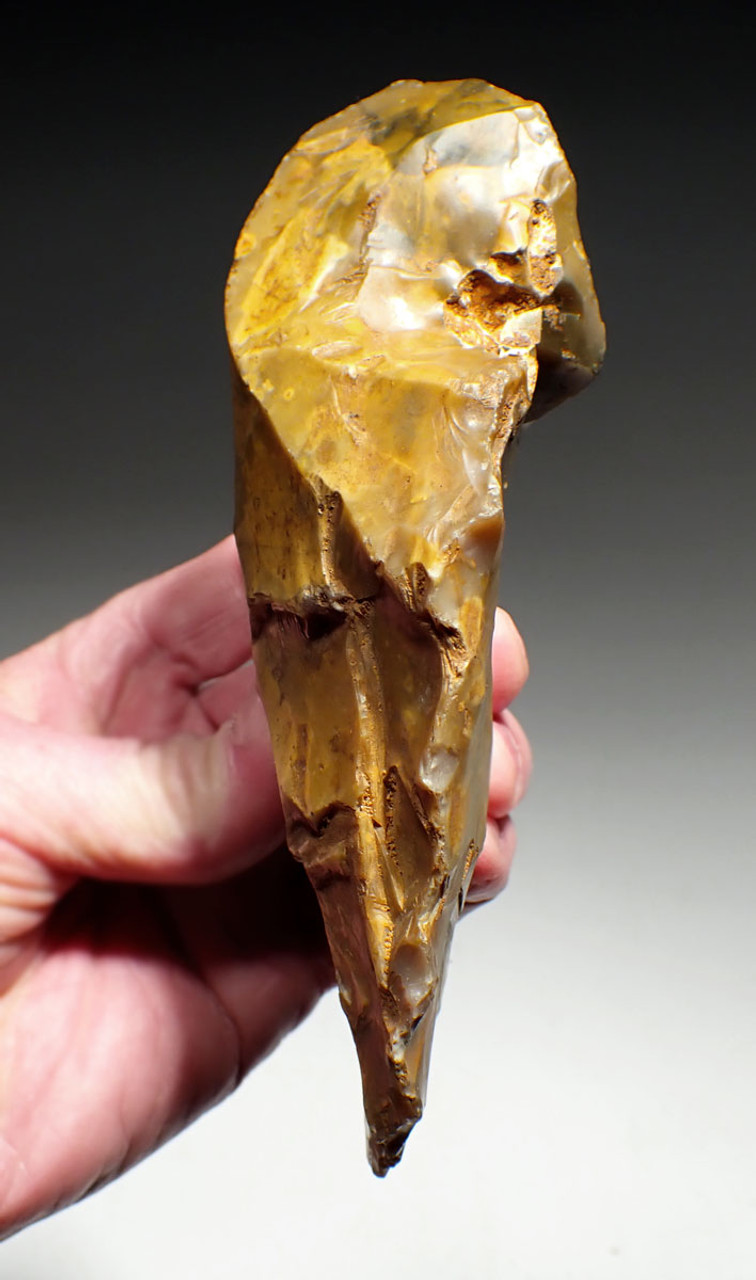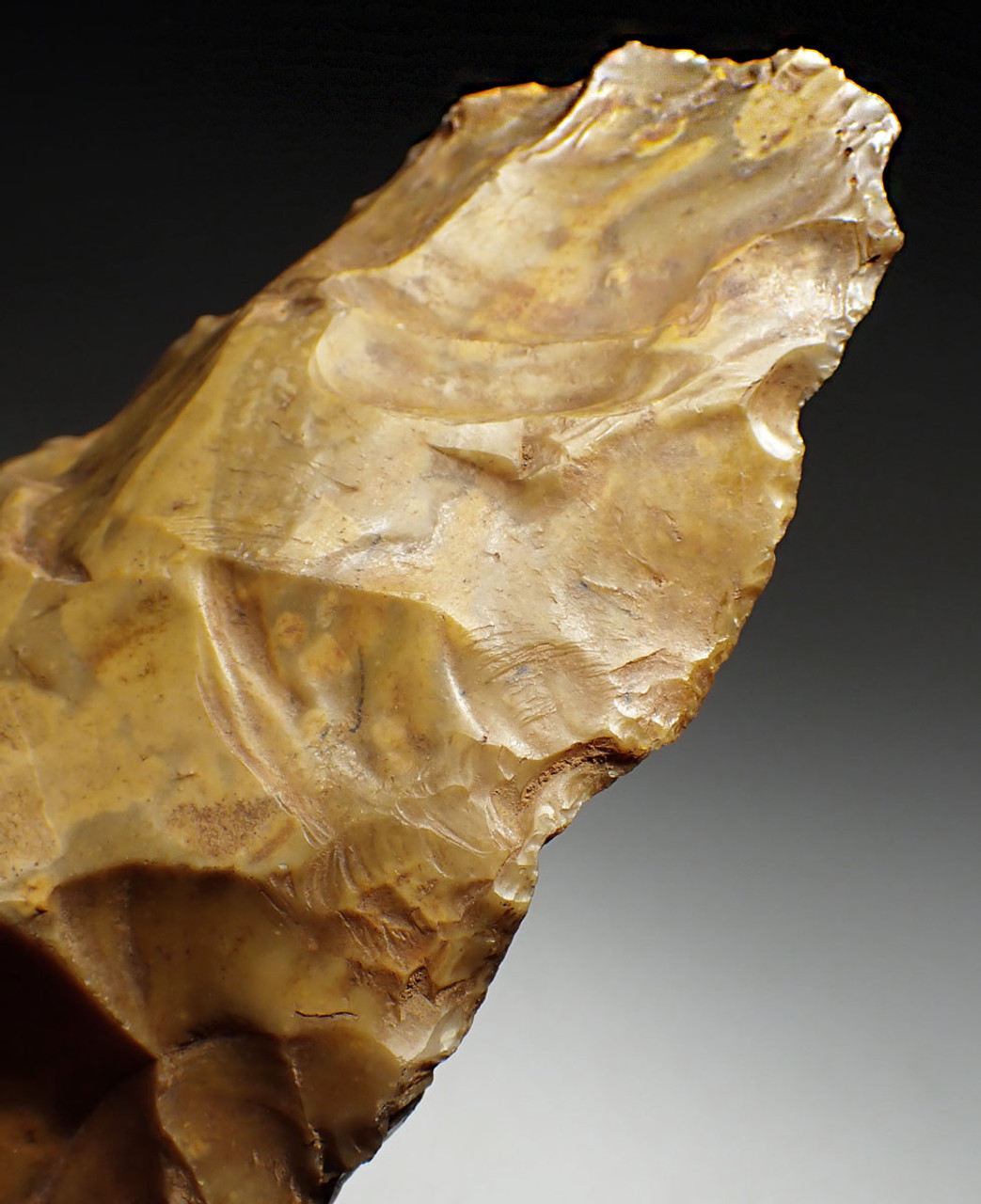Product Description
For comparison prices, please see the "Old World Typology and Price Guide" section of the "OVERSTREET IDENTIFICATION AND PRICE GUIDE TO INDIAN ARROWHEADS" editions 7th, 8th and 9th.
SEE MORE LOWER PALEOLITHIC ACHEULEAN STONE ARTIFACTS
This superb British Lower Paleolithic flint bifacial hand axe was fashioned by Homo erectus (H. heidelbergensis), the first humans to occupy Europe. It dates back to the Lower Paleolithic Period, made in the Acheulian Tradition, and was the predominant tool technology of the Homo erectus people in Europe from 1 million years ago to possibly as recent as 130,000 years ago. Fine quality English Lower Paleolithic hand axes like this are legendary among collectors. They all were found long ago in the early 20th century and many in the 19th century, when open gravel pits were commonly dug during the industrial age of England. Many of the finest known European Early Man hand axes in major museums hail from these former English gravel pits.
This MUSEUM-CLASS specimen is no exception!!! The proximal end shows a uniquely flaked grip where the hand can actually wrap around and hold onto the hand axe better than a conventional flattened form that is typical. This hand axe displays large proportions and TRULY SUPERB bifacial flaking throughout. In the past 30 years of selling, this is one of the finest English Lower Paleolithic hand axes we have ever offered. The extreme age of the flint has patinated to a warm golden tan hue with the original sediment minerals still intact. The blade-like chopping tip is undamaged and AS MADE. One side is bulbous in form with the other flaked to a flat profile. This allowed a sharp cutting blade end to be achieved to a thinner degree than if it were conventionally flaked on both sides. The entire hand axe shows THE FINEST masterful flaking and form, a prize of a highly skilled Homo erectus primitive human who once lived in what is now present-day England!
English Lower Paleolithic hand axes often move from one private collection to the next as many sites are now destroyed, built over or protected. In the past decades, European auctions have routinely set records for the highest prices realized on spectacular examples of prehistoric European Stone Age artifacts like this. Fine specimens are so few in number while the buyer market continues to expand and chase after the best material with no apparent price ceiling in sight. Nevertheless, the prices STILL, are a paltry comparison to much of the more mature rare collectibles on the market and Paleolithic artifact prices still really don't reflect the substantially higher rarity of these artifacts. As ever-increasing buyer demand continues to pursue the best pieces, the actual number of this material is sobering and we are likely to see prices easily rise ten-fold on top-grade specimens, in the next several years. The words "undervalued" and "collectible" are seldom found together in today's world but the realm of European and African Paleolithic artifacts is one where you can still find an emerging market and one of the greatest promises for future investment.
Due to the size and heft, and wear on the tip, it is highly probable this hand axe was used to butcher and dismember all the Ice Age large game animals of the day such as mammoth, bison, horse, reindeer and rhino.
WARNING: This specimen possesses a fine prehistoric patina and mineral deposits. Such traits are missing in the fake tools being passed off as genuine tools by fraudulent and/or uninformed dealers selling in auctions, online, at shops and shows. The market is currently awash in fakes and ancient debris shards sold as genuine Paleolithic tools. Make sure you get an unconditional certificate of authenticity and know your dealer is knowledgeable AND informed.
 US DOLLAR
US DOLLAR
 EURO
EURO
 AUSTRALIAN DOLLAR
AUSTRALIAN DOLLAR
 CANADIAN DOLLAR
CANADIAN DOLLAR
 POUND STERLING
POUND STERLING




